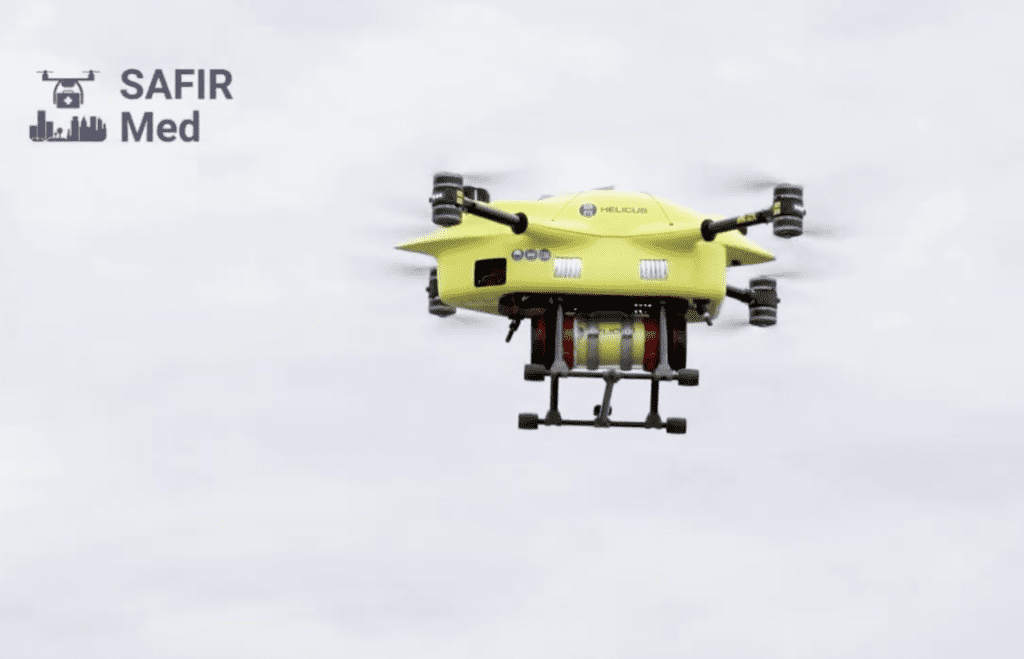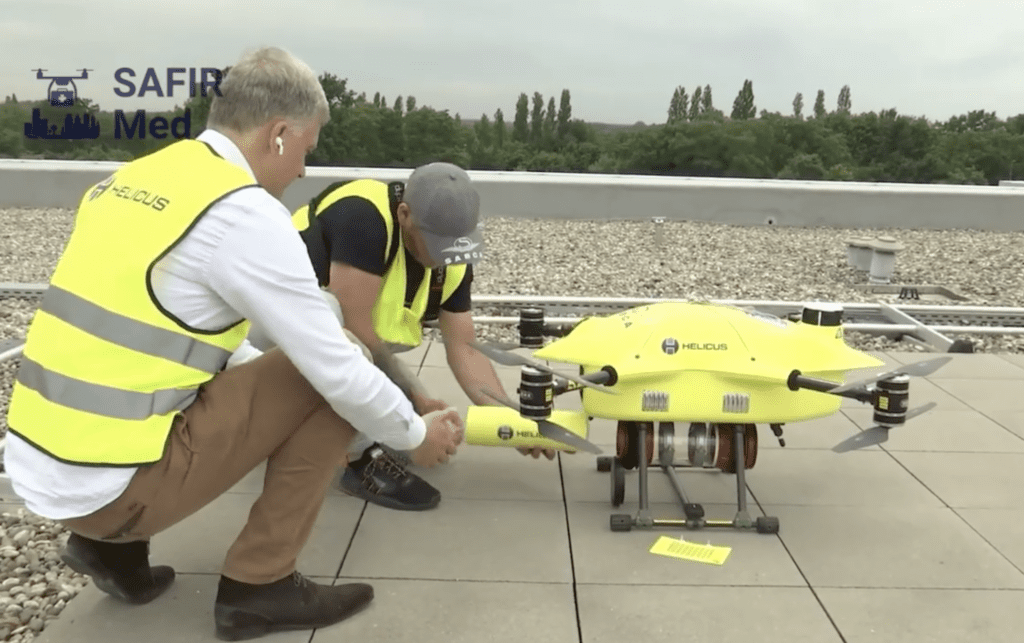SESAR JU Leads Project for Medical Drone Delivery in Belgium


SAFIR-Med, a project that is part of the SESAR Joint Undertaking, recently received authorization to perform a drone flight beyond visual line of sight over a populated area in Belgium. (Photo: SAFIR-Med)
The Belgian Civil Aviation Authority recently authorized a first-of-its-kind beyond visual line of sight (BVLOS) drone flight in Antwerp. This was the first BVLOS drone flight over a populated area operating within the European Union Aviation Safety Agency’s new regulations for unmanned aircraft, and complying with the Specific Operations Risk Assessment (SORA).
The flight took place in June as part of the SAFIR-Med project to explore the feasibility of using drones to perform urgent medical deliveries. The team, including drone operator Helicus, used an X-8 multicopter, developed by SABCA, for the flight.
The SAFIR-Med project is one of many led and funded by the SESAR Joint Undertaking—a public-private partnership that manages research and innovation related to air traffic management (ATM) in the European Union. The Joint Undertaking, or JU, is part of the Single European Sky ATM Research (SESAR) collaborative project.

As drone operations become more frequent, it is necessary to ensure that unmanned aircraft are integrated safely into the existing airspace. (Photo: SAFIR-Med)
In 2017, the SESAR JU drafted a blueprint for enabling U-space, a framework to facilitate the safe integration of routine drone operations into the existing airspace. The European Union Aviation Safety Agency (EASA) Committee approved a regulatory package for U-space in February 2021, and the European Commission adopted the regulations in April.
The regulatory framework for U-space includes requirements for ATM and ANSPs, and rules for ensuring that manned aircraft that operate alongside unmanned aircraft are electronically conspicuous. The U-space regulations will be applicable beginning on January 26, 2023.
Robin Garrity, Senior External Relations Officer of the SESAR 3 JU, commented that there will not be an immediate increase in the number of commercial drone activities taking place once these U-space regulations are in effect.
“The Regulation sets the rules for States to create, pretty much from scratch, a whole new ecosystem to support routine, commercial drone operations, and there are many pieces that need to be in place. Only when a State has all the key pieces in place can routine operations begin,” Garrity wrote in an emailed statement to Avionics International. The U-space regulations set the baseline for each State to work from when implementing a U-space environment that is operational.

Above is the X-8 multicopter, designed by SABCA with an integrated parachute. The drone is fully compliant with the flight test requirements specified in the ASTM F3322-18 Standard Specification. (Photo: SAFIR-Med)
At the end of June, the SESAR 3 JU announced three new projects as part of the Digital Sky Demonstrators that serve to test solutions for U-space and urban air mobility (UAM). These include U-ELCOME, coordinated by Eurocontrol to facilitate market uptake of services for U-space; BURDI, coordinated by Belgian ANSP skeyes, a project that will demonstrate management of unmanned aircraft systems (UAS) operations in different environments; and EALU-AER, coordinated by Future Mobility Campus Ireland to demonstrate U-space architecture operations and ATM integration by leveraging drone traffic management technology solutions.
The Digital Sky Demonstrator projects are designed specifically to support States as they transition from demonstrations to deployments of a U-space environment, Garrity explained. “Until it becomes routine for drone operators to be able to use U-space services, the demand for such services will remain somewhat abated,” he noted. “As operations are increasingly enabled, the number of drone operators making use of the services is expected to increase and this, in turn, is expected to render this new ecosystem commercially viable.”
The SESAR 3 JU works closely with standardization and regulatory bodies. The ICAO UAS Advisory Group is a global body of standardization for UAS operations and ATM that the SESAR JU participates in. The JU also participates in the European U-space Standardisation Coordination Group (EUSCG) and some EUROCAE Working Groups. Garrity added that they work closely with EASA—in particular, during execution of demonstration projects to ensure adherence to regulations and to maintain safety.
“All SESAR research projects, not just those dealing with U-space, are required to provide insight and recommendations for standardization and regulation,” he shared. “Any findings from our research and demonstration projects are immediately fed into EASA and EUSCG/EUROCAE activities so that they can be incorporated in new standards and regulations.”
“The close partnership between the SESAR 3 JU, SESAR project members, EASA and standardisation bodies is vital and fundamental to the successful realisation of the U-space vision,” Garrity wrote. He also emphasized the importance of ensuring that commercial operations are carried out safely, especially because the creation of an entirely new aviation ecosystem is such an ambitious undertaking.
Another project led by SESAR, called AURA, is a two-year-long program focused on U-space solutions. The first objective is to identify the requirements for communications with ATM and validate U-space services. Second, the AURA team will define an ATM-U-space Concept of Operations for drone operations alongside manned aircraft.
A representative of the AURA project told Avionics in an emailed statement that the project’s flight plans are authorized by default. However, manual authorization of flight plans is required for “very high-risk environments at the airport and surrounding areas,” the representative explained. “We manage it with flight plan authorizations by ATM/geofences requiring authorization (even applying initial Dynamic Airspace Reconfiguration concepts).”
AURA includes Honeywell Aerospace, ENAIRE, Airbus, EUROCONTROL, Leonardo, Thales, NATS, and Indra, among several other partners.
The post SESAR JU Leads Project for Medical Drone Delivery in Belgium appeared first on Aviation Today.
—————
Boost Internet Speed–
Free Business Hosting–
Free Email Account–
Dropcatch–
Free Secure Email–
Secure Email–
Cheap VOIP Calls–
Free Hosting–
Boost Inflight Wifi–
Premium Domains–
Free Domains





